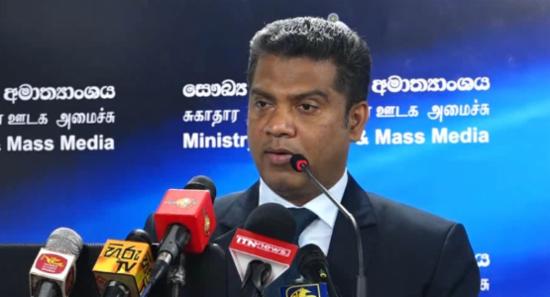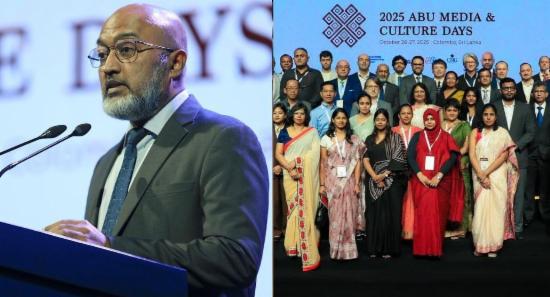.webp)
Economic Mismanagement and the real victims
COLOMBO (News 1st); As of now, Sri Lanka is in an economic turmoil, and the sky-rocketing cost of goods has left people helpless.
Why has Sri Lanka found itself in this situation?
Those in power have often blamed the COVID-19 pandemic for the crisis in the country. However, the claim is questionable, as Sri Lanka's South Asian peers have performed better economically.
The Asian Development Bank has projected India's economic growth to reach about 7.5% although the country dealt with a deadly wave of COVID-19.
According to the ADB, Pakistan which is grappling with a political crisis, is expected to record an economic growth of about 4%.
The economy of Bangladesh is expected to grow up to 6.9 % , Bhutan by 4.5% , Nepal by 3.9% , and Maldives which relies heavily on tourism by 11%.
However, the Asian Development Bank's forecast for Sri Lanka is a paltry 2.4%.
This gives rise to a plethora of questions;
Does this justify the blame on the COVID-19 pandemic, or is it sheer economic mismanagement that has caused the crisis?
Did the government make timely decisions when imposing and lifting restrictions at the peak of the COVID-19 pandemic?
Were vaccines imported to the country before it was too late?
Was the Dhammika tonic and pots of holy water were effective against COVID-19 as some officials believed it to be?
Was a plan in place to resuscitate export industries that bring foreign revenue to the country?
Do you remember how COVID-19 clusters were named after export businesses that bring massive foreign revenue?
Apart from entrusting tourism in the hands of a few allies, what was the government's plan to uplift the industry?
It is no secret that the import restrictions imposed to stem foreign exchange outflows, ultimately benefitted a few importers of sugar, coconut oil, and garlic.
In fact, Cabinet proposals were tabled to import luxury vehicles for politicians disregarding an import ban that was still in effect
As Sri Lanka's economy continued to sink, the Government made an overnight decision to ban the use of chemical fertilizer in mid last year.
This decision sparked anger among farmers who took to the streets.
However, the Government proceeded to import nano-nitrogen fertilizer from India, rubbing salt on the wounds of the agriculture industry.
In the same sequence of events, the Government paid more than 6.9 million US dollars for a Chinese organic fertilizer shipment that was never unloaded.
A state-run bank also saw itself mired in controversy during the transaction.
The government lost about 600 billion rupees in revenue after it decided to slash taxes immediately after coming into power.
What followed was a massive printing of money.
Central bank officials including Professor W.D. Lakshman, the governor at the time, strongly disputed the decision to print money, citing that money printing can cause the cost of goods and services to increase.
On September 15th 2021, Ajith Nivard Cabraal who was serving as a state minister, was appointed as the Governor of the Central Bank of Sri Lanka.
He insisted that money printing would not cause inflation and that there were sufficient dollars in the country.
Ultimately, the central bank's foreign reserves continued to deplete as it maintained a cap on the exchange rate of a dollar to Rs. 202.
Economic experts repeatedly called on the government to allow the exchange rate to float, and to seek the assistance of the International Monetary Fund to restructure Sri Lanka's debt.
However, neither the central bank governor nor the finance minister Basil Rajapaksa seemed to comprehend the gravity of the situation.
Eventually, the lack of foresight caused the country's foreign reserves to dwindle to 1.5 billion US dollars.
The central bank managed to top up it's reserves up to 2.5 billion US dollars by obtaining 1.5 billion US dollars from China under a SWAP exchange facility.
However, Sri Lanka's foreign currency reserves now stand at less than a billion US dollars.
At the peak of the economic crisis, the central bank in March decided to allow the exchange rate to float. However, it did not instill enough confidence among expatriate workers.
Sri Lankan workers did not remit money to the country through the banking system, as they received a higher exchange rate in the grey market.
Today, the dollar is selling at more than Rs. 320.
But this has not been effective in preventing remittances through informal channels, as a dollar is trading at about Rs. 400 in the grey market.
The rapid depreciation of the rupee, measured at about 60%, has taken a toll on the cost of goods, while foreign suppliers were increasingly reluctant to export fuel, milk powder, and gas to the country on credit.
Ultimately, authorities had to rely on spot purchases when importing these commodities instead of long term supply contracts.
The last few months have seen people in queues to purchase essentials.
Is COVID-19 to be blamed for this crisis? Or is it mismanagement that has left the country in limbo?
How can Sri Lanka overcome this crisis?
The government has now decided to approach the International Monetary Fund for assistance, and the first meeting between the IMF and the Sri Lankan delegation is due to take place on 11th April.
While there is no ministerial cabinet, the people have lost faith in the political leadership. There seems to be no future plan for the Government either.
Against such a backdrop, will the International Monetary Fund help Sri Lanka out of this crisis by offering dollars?
Sri Lanka has to repay 6.9 billion US dollars in debt this year, and the Government has to incur about 300 million US dollars to import fuel monthly.
It also needs more dollars to import essentials like food and medicines.
Will the assistance of the International Monetary Fund be sufficient to assist the country?
Sri Lanka has already obtained a 1 billion US dollar loan from India, and has approached the neighboring state for another 1.5 billion US dollar loan.
The Government has also received an extension to repay a 250 million US dollar SWAP to Bangladesh, and has sought another 250 million US dollars from them.
A request for 200 million US dollars has been made from Pakistan as well. China has said it will provide Sri Lanka with 2.5 billion US dollars.
However, each of these loans have their own conditions.
The government has already given India three islands in the North, the Trincomalee Oil Tank Farm, a land in Sampur, and also a project to build a Maritime Rescue Coordination Centre.
This only provides to spur more questions;
How long will Sri Lanka be able to survive like this?
Is the country facing the impact of the COVID-19 pandemic?
Aren't we facing the repercussions of mismanagement?
https://www.youtube.com/watch?v=WuNodCsRKU8Other Articles
Featured News





.png )
-821183_550x300.jpg)
-821177_550x300.jpg)
-821171_550x300.jpg)
-821165_550x300.jpg)
-821159_550x300.jpg)





-819380_550x300.jpg)


-812087_550x300.jpg)
-810262_550x300.jpg)
















.gif)